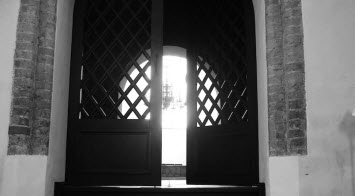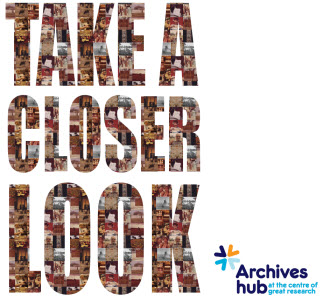The Archives Hub team value the links that we have with our contributors, who, after all, make the Hub what it is. We have a Contributors’ Forum in order to establish and develop links with contributors and get their feedback on Hub developments.
 This week we ran a Contributors’ Forum that concentrated on measuring impact, something that is becoming increasingly important in order to demonstrate value. Unfortunately, we ended up with quite a small group, despite sending out some enticing emails – maybe a sign of the difficult times. But we still had a stimulating discussion, and for us it is always very valuable to get a perspective from the actual archives repositories.
This week we ran a Contributors’ Forum that concentrated on measuring impact, something that is becoming increasingly important in order to demonstrate value. Unfortunately, we ended up with quite a small group, despite sending out some enticing emails – maybe a sign of the difficult times. But we still had a stimulating discussion, and for us it is always very valuable to get a perspective from the actual archives repositories.
We spent the first part of the morning with updates on the Hub and reports from the contributors: John Rylands at Manchester, Salford, Liverpool and Glasgow. Joy then gave a presentation on measuring impact, reflecting on some work that the Archives Hub, Copac and Zetoc services have carried out through online surveys and one-to-one interviews with researchers in order to create case studies.
In the afternoon we concentrated on measuring impact by asking the contributors to think about (i) what sort of information they currently collect about their researchers and (ii) what sort of information they would like to have. Overall, it seems that most archives have some form of registration, where researchers give some details about themselves. But the information recorded varies, not surprisingly. Sometimes information such as the items consulted is given, sometimes researchers are asked to specify their subject area, and at Glasgow they are asked how they found out about the University Archive. At Liverpool all of the requisition slips are studiously kept, so that there is a record of who has looked at what, and at Glasgow there is a log of everything leaving the strong room, and I’m sure that for most archives this is the case. At Salford, phone and email enquiries are all logged, as well as website statistics kept.
However, it seems that in general there is very little information on what happens next. How does the visit to the archive benefit the researcher? Do they use what they have found in publications? reports? articles? The archive repository may find this sort of information out if the researcher asks about copyright issues, but otherwise it is very hard to know. We agreed that informal networks can be valuable here. Archivists often get to know regular researchers, and in fact, this may be more likely to happen at smaller repositories where there is a lone archivist. But this can only account for a small part of the use of the collections. In fact, two of our contributors said that a reception desk had recently been installed so that researchers often don’t really interact directly with the archivist unless they have a particular query, so whilst this may be more efficient, it may distance us more from our users.
Also, it seems that the information that is gathered is not really utilised. It ‘may’ go into reports, and it ‘may’ be used for funding applications, but the suggestion is that this is done in a rather ad hoc manner. At Glasgow, it is important to show that the researchers and students from the University are being prioritised, so the information gathered can help to support this kind of situation.
From the discussion that we had around this topic, our first likely action arose: If there is an easy way for a researcher to grab an archival reference, it will encourage people to include the correct citation, which will help with tracking the use of archives. This is something that we should be able to introduce for the Hub.
We talked about how easy it would be to simply ask researchers if they will speak about their research. Maybe they could be encouraged to put something about this on the registration form. We felt that if we are honest about what we need (which is often to demonstrate our value in order to secure continued funding), then researchers may be more willing than we might suppose. There is, undoubtedly, an huge feeling of goodwill towards archives, and, as one contributor said, we may be pushing at an open door here.
We talked about the sort of information we would like to gather, and came up with some possibilities:
We would like to know how researchers are coming to the repository – e.g. from the Archives Hub, from a Hub Spoke, from the NRA?
We would like to know if users find what they need from the archival descriptions themselves. Maybe more detailed descriptions sometimes provide the information that they need – they might even show that the archive is not relevant to the research, thus saving the researcher a wasted visit (a positive negative outcome!).
We would like to know more about how people behave when looking at an archive catalogue: Where do they navigate to? Do they explore the catalogue Do they search laterally?
From the discussion with these contributors, it seems that the Archives Hub is having to place more emphasis on issues around ‘market penetration’ than they are at present, although it was felt that this is starting to change and that archives may well be faced with more pressure to understand their markets and how to effectively reach them.
Finally, we came up with another action, which was to try to compile 3 case studies over the next year. John Rylands agreed to work with us on the first one, so that we can test out how best to approach this. It may be that telling stories is the most fruitful way to get a sense of the impact that archives have. But we cannot ignore the fact that statistics are required, and we do have to continue to look for different ways to demonstrate our value.

